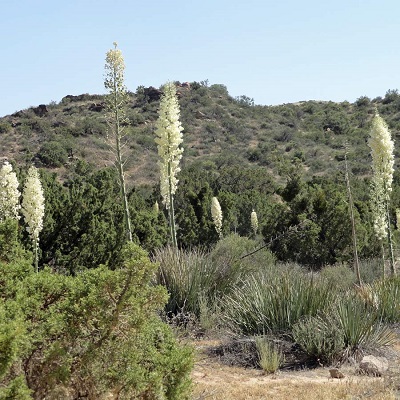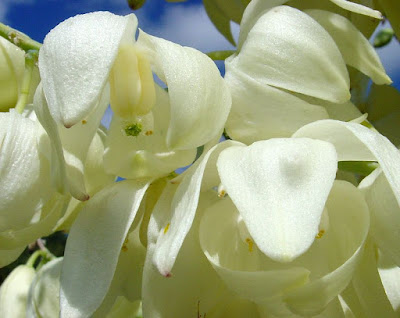 |
| Yucca whipplei |
 |
| Yucca whipplei blooms |
Yucca whipplei is a stemless species which develops a dense, globular clump of long, narrow, rigid, spine-tipped leaves. Each leaf is finely toothed, glaucous, 20–90 cm (rarely to 125 cm) long and should only be handled wearing suitable gloves and arm protection. The large fragrant blooms are greenish-white, edged with purple, and appear in May and June. They are produced in densely packed panicles at the end of an erect 1.0-3.6 scape ( long, leafless flowering stem). It is pollinated by the California yucca moth which has since become a classic example of symbiosis.
In its native habitat, Yucca whipplei is usually found growing in chaparral, coastal sage scrub, and oak woodland. It is suitable for planting in subtropical, mediterranean and warm temperate environments. Although able to withstand frost, in the United Kingdom it can only be recommended for sunny positions in the mildest counties and will require a very well-drained soil. Avoid heavy or clay soils or any which are prone to waterlogging.
Yucca whipplei received the Award of Merit (AM) from the Royal Horticultural Society in 1945.
Image credit - By Noah Elhardt - Own work. Camera: Sony DSC-S70., Public Domain, https://commons.wikimedia.org/w/index.php?curid=642379
For related articles click onto the following links:
YUCCA GLORIOSA
YUCCA ELEPHANTIPES
YUCCA FLACCIDA
YUCCA RECURVIFOLIA







No comments:
Post a Comment